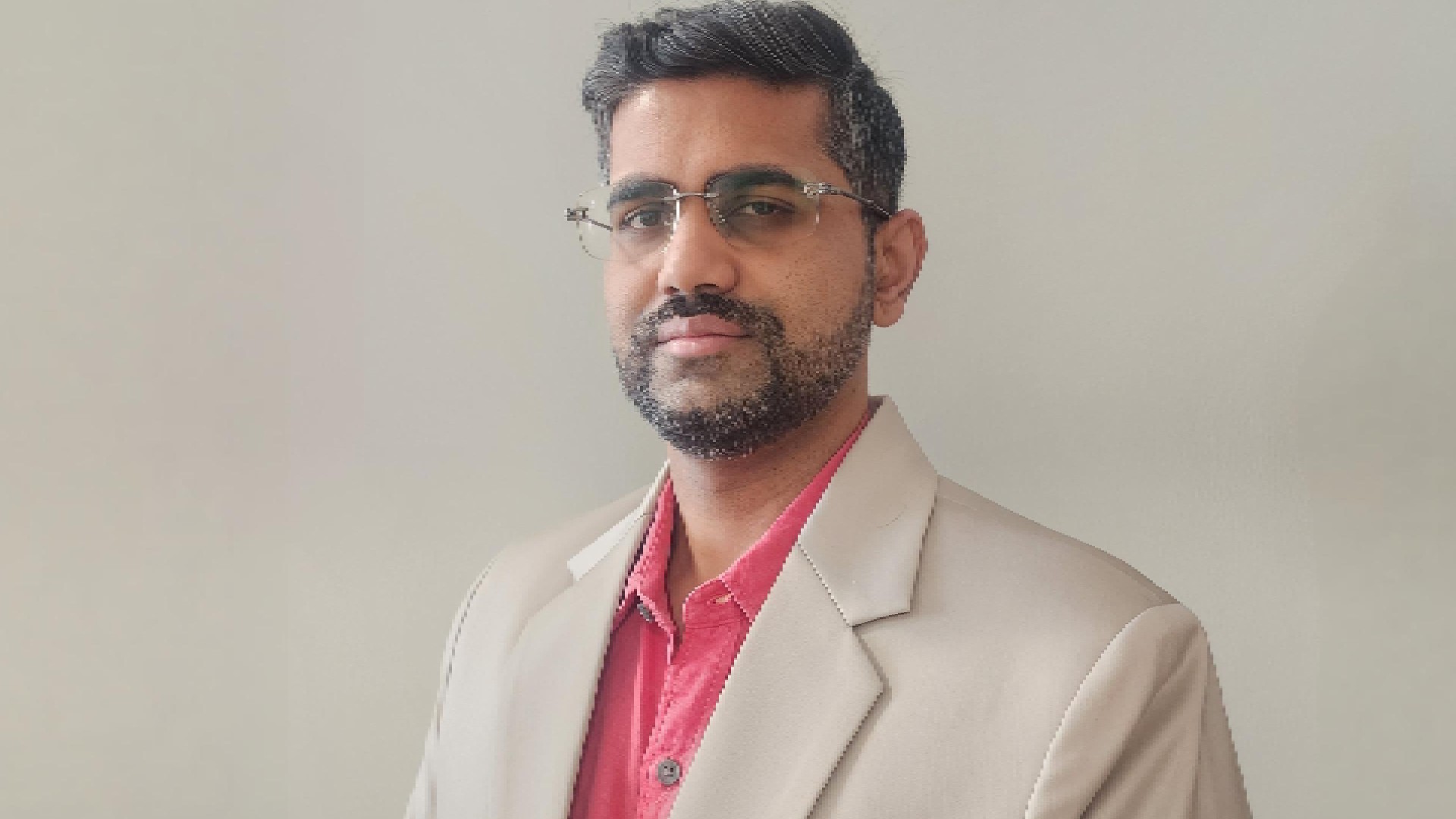Tech Features
The Evolution of Data Centre Technologies: From Hardware to Software-Defined Infrastructure

Kayvan Karim, Assistant Professor at Mathematical and Computer Sciences, Heriot-Watt University Dubai
In recent years, the landscape of data centre technologies has significantly transformed, shifting from the traditional hardware-based infrastructure to more flexible and efficient software-defined solutions. This change, driven by the increasing demand for scalable, agile, and cost-efficient computing resources in a rapidly digitised world, has brought numerous benefits. In this op-ed, Kayvan Karim delves into the journey of hardware-centric data centres. He explains how virtualisation, containerisation, and cloud computing have revolutionised data centre design, scalability, and efficacy.
Traditional Data Centres: The Era of Hardware Infrastructure

In the not-so-distant past, data centres were synonymous with massive physical servers, storage, and networking equipment housed in dedicated facilities. Once the gold standard, these environments were burdened with high capital costs, limited scalability, and resource inefficiencies. The exponential growth in data volume and the increasing complexity of business applications have made these traditional architectures obsolete. This stark reality underscores the need to embrace more modern, software-defined solutions.
The Rise of Software-Defined Data Centres (SDDCs)
To address the issues of hardware-centric data centres, the concept of software-defined infrastructure emerged as a game-changer. Software-defined data centres (SDDCs) are a paradigm shift. They decouple the management and control of data centre resources from the underlying hardware, enabling administrators to programmatically provision, manage, and orchestrate assets. This shift toward software-defined solutions has revolutionised how data centres are designed, deployed, and operated, offering unprecedented agility, scalability, and cost-effectiveness. These transformative benefits of SDDCs paint a promising picture for the future of data centre technologies. According to Precedence Research, the global software-defined data centre market size is expected to hit around USD 350.53 billion by 2032, poised to grow at a compound annual growth rate (CAGR) of 22.9% from 2023 to 2032.
Virtualisation: Empowering Data Centre Efficiency
Virtualisation, a key component of contemporary data centre technologies, has proven worth it. Allowing several virtual instances to run on one physical server significantly improves resource utilisation. This abstraction from underlying hardware systems regarding computer storage and networking capabilities provides greater flexibility and makes workload management easier. As per VMware estimates, virtualisation can reduce hardware and operational costs by up to 70%. This is a testament to its effectiveness and the reassurance it brings about the future of data centre technologies. Additionally, a survey conducted by Citrix revealed that 74% of companies experienced reduced IT expenditure due to virtualisation. This underscores the importance of virtualisation in enhancing data centre efficiency.
Containerisation: Driving Portability and Scalability
Containers have become popular for packaging applications in lightweight, portable environments. Unlike virtual machines, containers are based on the host operating system kernel; thus, they are resource-efficient and faster to deploy. Docker and Kubernetes containerisation technologies, among others, have been widely adopted, allowing organisations to build, deploy and scale applications with unprecedented speed and flexibility. According to Mordor Intelligence, the containerised data centre market size is expected to grow at a CAGR of 18.49% to reach USD 33.77 billion by 2029. This depicts a fast-growing trend of containers being used by many companies, where enterprises use software-defined solutions that could efficiently be utilised to streamline the management or deployment of such containers.
Cloud Computing: The Future of Data Centre Infrastructure
Cloud computing has fundamentally changed how organisations consume and deliver IT services by offering on-demand access to different computing resources over the internet, which can be used anytime needed. Public-private hybrid cloud deployments have also become increasingly common, enabling businesses to leverage upon scalability, flexibility, and cost advantages cloud technologies provide. According to Mordor Intelligence, the cloud computing market is expected to reach USD 1.44 trillion by 2029, growing at a CAGR of 16.40% during the forecast period (2024-2029). This shows that most firms are accelerating their adoption of clouds to enjoy benefits like agility scaling capabilities and cost savings from moving workloads into these platforms.
Embracing the Future of Data Centre Technologies
The transition from traditional hardware infrastructures to software-defined solutions in data centres signifies a complete change in how computing resources are allocated, administered, and optimised. Technologies such as virtualisation, containerisation, and cloud computing have made this shift possible, enabling organisations to construct adaptable and efficient data centre infrastructure. The future is likely characterised by software-defined data centres that bring with them new prospects for innovation, growth, and competitiveness in the digital age.
The evolution of data centre technologies holds an incredible prospect for businesses that want higher levels of efficiency, flexibility, and scalability within an increasingly analytic society. By taking advantage of recent developments in virtualisation, containerisation or cloud computing technology, corporations can prepare their data centre infrastructure for success in the digital age while making it more resilient at a relatively lower cost.
Tech Features
FROM AI EXPERIMENTS TO EVERYDAY IMPACT: FIXING THE LAST-MILE PROBLEM

By Aashay Tattu, Senior AI Automation Engineer, IT Max Global
Over the last quarter, we’ve heard a version of the same question in nearly every client check-in: “Which AI use cases have actually made it into day-to-day operations?”
We’ve built strong pilots, including copilots in CRM and automations in the contact centre, but the hard part is making them survive change control, monitoring, access rules, and Monday morning volume.
The ‘last mile’ problem: why POCs don’t become products
The pattern is familiar: we pilot something promising, a few teams try it, and then everyone quietly slides back to the old workflow because the pilot never becomes the default.
Example 1:
We recently rolled out a pilot of an AI knowledge bot in Teams for a global client’s support organisation. During the demo, it answered policy questions and ‘how-to’ queries in seconds, pulling from SharePoint and internal wikis. In the first few months of limited production use, some teams adopted it enthusiastically and saw fewer repetitive tickets, but we quickly hit the realities of scale: no clear ownership for keeping content current, inconsistent access permissions across sites, and a compliance team that wanted tighter control over which sources the bot could search. The bot is now a trusted helper for a subset of curated content, yet the dream of a single, always-up-to-date ‘brain’ for the whole organisation remains just out of reach.
Example 2:
For a consumer brand, we built a web-based customer avatar that could greet visitors, answer FAQs, and guide them through product selection. Marketing loved the early prototypes because the avatar matched the brand perfectly and was demonstrated beautifully at the launch event. It now runs live on selected campaign pages and handles simple pre-purchase questions. However, moving it beyond a campaign means connecting to live stock and product data, keeping product answers in sync with the latest fact sheets, and baking consent into the journey (not bolting it on after). For now, the avatar is a real, working touchpoint, but still more of a branded experience than the always-on front line for customer service that the original deck imagined.
This is the ‘last mile’ problem of AI: the hard part isn’t intelligence – it’s operations. Identity and permissions, integration, content ownership, and the discipline to run the thing under a service-level agreement (SLA) are what decide whether a pilot becomes normal work. Real impact only happens when we deliberately weave AI into how we already deliver infrastructure, platforms and business apps.
That means:
- Embed AI where work happens, such as in ticketing, CRM, or Teams, and not in experimental side portals. This includes inside the tools that engineers, agents and salespeople use every day.
- Govern the sources of truth. Decide which data counts as the source of truth, who maintains it, and how we manage permissions across wikis, CRM and telemetry.
- Operate it like a core platform. It should be subject to the same expectations, such as security review, monitoring, resilience, and SLA, as core platforms.
- Close the loop by defining what engineers, service desk agents or salespeople do with AI outputs, how they override them, and how to capture feedback into our processes.
This less glamorous work is where the real value lies: turning a great demo into a dependable part of a project. It becomes a cross-functional effort, not an isolated AI project. That’s the shift we need to make; from “let’s try something cool with AI” to “let’s design and run a better end-to-end service, with AI as one of the components.”
From demos to dependable services
A simple sanity check for any AI idea is: would it survive a Monday morning? This means a full queue, escalations flying, permissions not lining up, and the business demanding an answer now. That’s the gap the stories above keep pointing to. AI usually doesn’t fall over because the model is ‘bad’. It falls over because it never becomes normal work, or in other words, something we can run at 2am, support under an SLA, and stand behind in an audit.
If we want AI work to become dependable (and billable), we should treat it like any other production service from day one: name an owner, lock the sources, define the fallback, and agree how we’ll measure success.
- Start with a real service problem, not a cool feature. Tie it to an SLA, a workflow step, or a customer journey moment.
- Design the last mile early. Where will it live? Is it in ticketing, CRM, Teams, or a portal? What data is it allowed to touch? What’s the fallback when it’s wrong?
- Make ownership explicit. Who owns the content, the integrations, and the change control after the pilot glow wears off?
- Build it with the people who’ll run it. Managed services, infra/PaaS, CRM/Power Platform, and security in the same conversation early – because production is where all the hidden requirements show up.
When we do these consistently, AI ideas stop living as side demos and start showing up as quiet improvements inside the services people already rely on – reliable, supportable, and actually used.
Tech Features
WHY LEADERSHIP MUST EVOLVE TO THRIVE IN AN AI DRIVEN WORLD

By Sanjay Raghunath, Chairman and Managing Director of Centena Group
Leadership today is being reshaped not by technology alone, but by the pace at which the world around us is changing. Conventional leadership models built on rigid hierarchies, authority, and control are no longer sufficient in an era defined by artificial intelligence, automation, and constant disruption. What organisations need now is a more human-centric model, adaptive, and grounded form of leadership.
As digital transformation accelerates, the role of a leader has fundamentally shifted from imposing authority. Leadership is no longer about issuing directions from the top; it is about guiding organisations and people through uncertainty with clarity and confidence. In an AI-driven world, effectiveness does not come from being the most technical person in the room, but from understanding how technology reshapes industries and how to integrate it responsibly to create long-term value.
The economic impact of AI is already undeniable. Reports suggest that AI could contribute up to USD 320 billion to the Middle East’s GDP by 2030, with the UAE alone expected to see an impact of nearly 14 per cent of GDPby that time. Globally,PwC estimates that AI adoption could increase global GDP by up to 15 per cent by 2035. These numbers signal more than opportunity, they signal inevitability. Leaders who cling to static models and resist change risk being overtaken as industries evolve around them.
One of the most persistent challenges in leadership today is resistance to change. When leaders rely on outdated hierarchies and familiar ways of working, organisations struggle to respond to volatility. What worked yesterday may no longer work tomorrow. Flexibility, once considered a desirable trait, has become a necessity for survival. Ignoring change is no longer an option.
At the same time, expectations of our colleagues have shifted significantly. People today seek more than compensation or career progression. They are looking for purpose, belonging, and leaders who communicate with transparency rather than authority. This shift is reinforced by the 2025 Employee Experience Trends Report, which draws on feedback from 169,000 employees. The findings show that belonging and purpose are now among the strongest drivers of engagement, while AI-related anxiety and change fatigue are growing concerns within the workforce.
These factors highlight the role of authentic human connection in leadership. One of the critical elements in this regard is emotional intelligence (EQ), which enables leaders to build trust, inspire confidence and form meaningful relationships with their teams. While data, analytics, and AI can inform better decisions, it is empathy that sustains relationships and credibility. Leaders who lack emotional awareness often appear distant, making trust difficult to establish and sustain.
In an era of advanced technologies such as AI, automation and chatbots, there is a prevailing fear about technology overtaking the human role. It is the leadership’s responsibility to instil confidence in people that technologies are designed to enhance human capability, not to diminish it. Technology must be positioned as an enabler. Even though the pace of this transformation can be exhausting, leaders must navigate this challenge with renewed energy and a clear strategy to guide their organisations.
Today, leadership that is adaptable, collaborative, and emotionally aware is proving far more effective than traditional command-and-control models. The transition is from exercising authority to creating genuine connections. Strong leaders integrate change into their strategies while keeping people at the centre of their organisations, while viewing technological innovations as a partner rather than a threat.
Investing in people is not optional, as roles continue to evolve and skill requirements change. Our colleagues must feel valued and supported, as recognition and empathy contribute to boosting engagement and innovation. Empathic leadership helps bridge the gap between market demands and individual needs. Listening with intent, understanding context and responding with genuine concern are no longer additional qualities, they are essential leadership competencies.
The future belongs to leaders who blend clear thinking with empathy, who remain grounded in the present while envisioning bold possibilities and driving innovation forward without eroding trust. In this AI-driven age, success depends on how leaders balance innovation with trust. Leadership is neither about resisting change nor surrendering to it entirely. It is the ability to guide people through uncertainty with emotional depth and stability, recognising that true authority is not earned through control, but through the strength of human connection.
Cover Story
PLAUD Note Pro: This Tiny AI Recorder Might Be the Smartest Life Upgrade You Make!

By Srijith KN
I’ve been using the Plaud Note Pro for over three months now, and this is a device that has quietly earned a permanent place in my daily life now. Let me walk you through what it does—and why I say that so?
Well at first I thought this wasn’t going to do much with my life, and by the looks of it Plaud Note Pro looks like a tiny, card-sized gadget—minimal, unobtrusive to carry it around.
With a single press of the top button, it starts recording meetings, classes, interviews, or discussions. Once you end your session, the audio is seamlessly transferred to the Plaud app on your phone, where it’s transformed into structured outputs—summaries, action lists, mind maps, and more.

In essence, it’s a capture device that takes care of one part of your work so you can concentrate on the bigger game.
Design-wise, the device feels premium, it features a small display that shows battery level, recording status, and transfer progress—just enough information without distraction. The ripple-textured finish looks elegant and feels solid, paired with a clean, responsive button. It also comes with a magnetic case that snaps securely onto the back of your phone, sitting flush and tight, making it easy to carry around without thinking twice.
Battery life is another standout. On a full charge, the Plaud Note Pro can last up to 60 days, even with frequent, long recording sessions. Charging anxiety simply doesn’t exist here.
Well, my impressions about the device changed once I had an audio captured. I tested this in a busy press conference setting—eight to ten journalists around me, multiple voices, ambient noise—and the recording came out sharp and clear. Thanks to its four-microphone array, it captures voices clearly from up to four to five meters away, isolating speech with precision and keeping voices naturally forward. This directly translates into cleaner transcripts. It supports 120 languages, and yes, I even tested transcription into Malayalam—it worked remarkably well, condensed the entire convo-interview that I had during an automotive racing show that I was into.
Real meetings or interviews are rarely happens in a neat environment, and that’s where I found the Plaud Note Pro working for me. It captures nuances and details I often miss in the moment. As a journalist, that’s invaluable. The app also allows you to add photos during recordings, enriching your notes with context and visuals.
I tested transferring files over 20 minutes long, and the process was smooth and quick. Accessing the recordings on my PC via the browser was equally intuitive—everything is easy to navigate and well laid out.

Now to what is inside this tiny recorder. Well, the core of the experience is Plaud Intelligence, the AI engine powering all Plaud note-takers. It dynamically routes tasks across OpenAI, Anthropic, and Google’s latest LLMs to deliver professional-grade results. With over 3,000 templates, AI Suggestions, and features like Ask Plaud, the system turns raw conversations into organized, searchable, and actionable insights. These capabilities are available across the Plaud App (iOS and Android) and Plaud Web.
Privacy is what I happen to see them look at seriously. All data is protected under strict compliance standards, including SOC 2, HIPAA, GDPR, and EN18031, ensuring enterprise-grade security.
What makes the AI experience truly effective is the quality of input. Unlike a phone recorder—where notifications, distractions, and inconsistent mic pickup interfere—the Plaud Note Pro does one job and does it exceptionally well. It records cleanly, consistently, and without interruption, delivering what is easily one of the smoothest recording and transcription experiences I’ve used so far.
I’m genuinely curious to see how Plaud evolves this product further. If this is where they are today, the next version should be very interesting indeed.
“The Plaud Note Pro isn’t just a recorder; it’s a pocket-sized thinking partner that captures the details so you can think bigger, clearer, and faster.”
- Plaud Note Pro is now available for pre-order at https://uae.plaud.ai/pages/plaud-note-pro
- Plaud Note and NotePin are available at https://uae.plaud.ai
-

 Tech News2 years ago
Tech News2 years agoDenodo Bolsters Executive Team by Hiring Christophe Culine as its Chief Revenue Officer
-

 VAR9 months ago
VAR9 months agoMicrosoft Launches New Surface Copilot+ PCs for Business
-

 Tech Interviews2 years ago
Tech Interviews2 years agoNavigating the Cybersecurity Landscape in Hybrid Work Environments
-

 Tech News6 months ago
Tech News6 months agoNothing Launches flagship Nothing Phone (3) and Headphone (1) in theme with the Iconic Museum of the Future in Dubai
-
News10 years ago
SENDQUICK (TALARIAX) INTRODUCES SQOOPE – THE BREAKTHROUGH IN MOBILE MESSAGING
-

 Tech News2 years ago
Tech News2 years agoBrighton College Abu Dhabi and Brighton College Al Ain Donate 954 IT Devices in Support of ‘Donate Your Own Device’ Campaign
-

 VAR1 year ago
VAR1 year agoSamsung Galaxy Z Fold6 vs Google Pixel 9 Pro Fold: Clash Of The Folding Phenoms
-

 Editorial1 year ago
Editorial1 year agoCelebrating UAE National Day: A Legacy of Leadership and Technological Innovation












